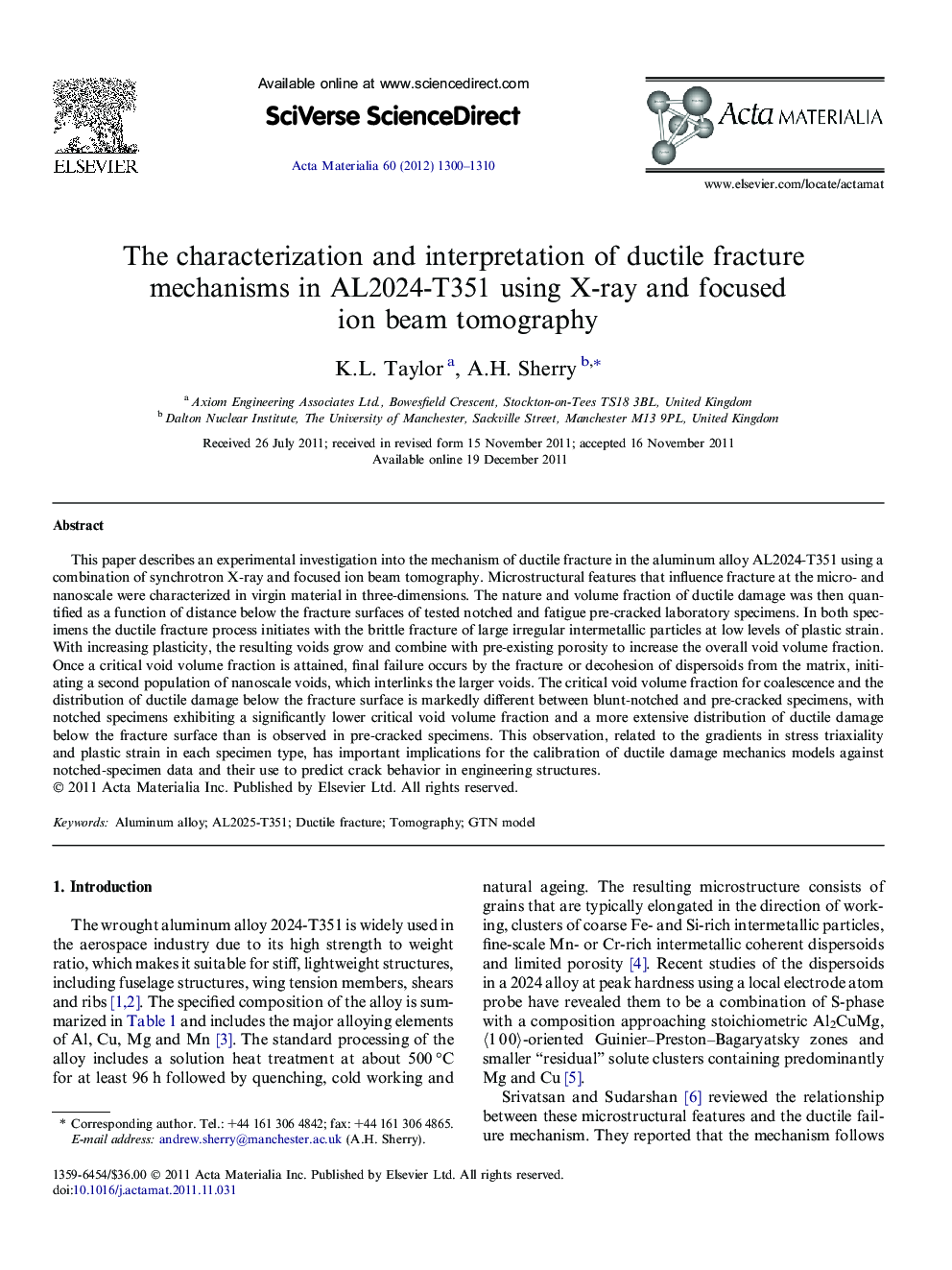| Article ID | Journal | Published Year | Pages | File Type |
|---|---|---|---|---|
| 10620543 | Acta Materialia | 2012 | 11 Pages |
Abstract
This paper describes an experimental investigation into the mechanism of ductile fracture in the aluminum alloy AL2024-T351 using a combination of synchrotron X-ray and focused ion beam tomography. Microstructural features that influence fracture at the micro- and nanoscale were characterized in virgin material in three-dimensions. The nature and volume fraction of ductile damage was then quantified as a function of distance below the fracture surfaces of tested notched and fatigue pre-cracked laboratory specimens. In both specimens the ductile fracture process initiates with the brittle fracture of large irregular intermetallic particles at low levels of plastic strain. With increasing plasticity, the resulting voids grow and combine with pre-existing porosity to increase the overall void volume fraction. Once a critical void volume fraction is attained, final failure occurs by the fracture or decohesion of dispersoids from the matrix, initiating a second population of nanoscale voids, which interlinks the larger voids. The critical void volume fraction for coalescence and the distribution of ductile damage below the fracture surface is markedly different between blunt-notched and pre-cracked specimens, with notched specimens exhibiting a significantly lower critical void volume fraction and a more extensive distribution of ductile damage below the fracture surface than is observed in pre-cracked specimens. This observation, related to the gradients in stress triaxiality and plastic strain in each specimen type, has important implications for the calibration of ductile damage mechanics models against notched-specimen data and their use to predict crack behavior in engineering structures.
Related Topics
Physical Sciences and Engineering
Materials Science
Ceramics and Composites
Authors
K.L. Taylor, A.H. Sherry,
